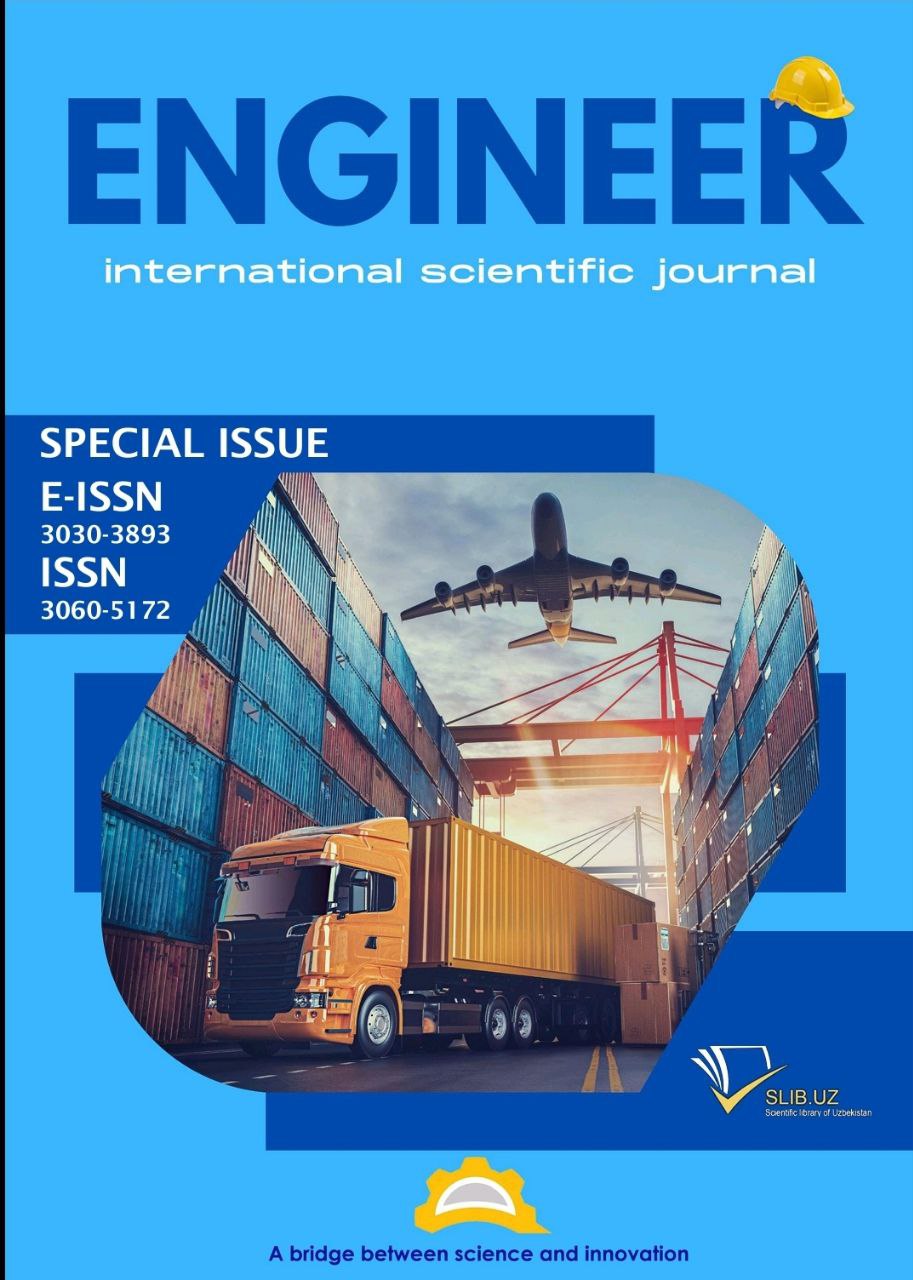Study of porous structure of concrete on the basic of polyfunctional additive and low-active mineral filler
Abstract
This study investigates the porous structure of concrete modified with a multifunctional additive and a low-activity mineral filler. The research, conducted at Tashkent State TranSMWrt University, examines the effects of pore characteristics—size, shape, and volume—on the physical and mechanical properties of concrete, such as strength, permeability, and durability.The study categorizes pores into capillary, sedimentation, shrinkage, and technological types, each influencing concrete performance. A mercury porosimetry method was used to analyze porosity. Experimental concrete samples were prepared with different compositions and tested after 28 days of curing.The results show that using a complex modifier significantly reduces porosity. The composition incorporating both a multifunctional additive and steelmaking waste (composition No. 2) achieved a 30.11% reduction in total porosity compared to the control. The combination was more effective than using either component alone.The findings suggest that optimizing porosity through mineral fillers and chemical additives can enhance concrete durability and performance, making it a promising approach for advanced construction materials.
References
[2] Demyanova V.S. Modification of high-strength concrete with complex ultrafine fillers /V.S. Demyanova, V.I. Kalashnikov, E.Yu. Minenko, G.N. Kazina /Concrete and reinforced concrete in the third millennium. Materials of the III International scientific and practical conference. – Rostov-on-Don. – Publishing house of the Russian State. builds. The university. – 2004. – T1. – pp.160-164.
[3] Komokhov P.G. Modified cement concrete, its structure and properties / P.G. Komokhov, N.N. Shangina // Cement and its application. - 2002. – No. 1. – pp.43-46.Комохов, Н.Н. Шангина // Цемент и его применение. – 2002. – №1. – С.43-46.
[4] Duval R. Influence of silica fume, on the workability and the compressive strength of high-performance concretes/ R. Duval, E.H. Kadri //Cem. and Concr. Res. – 1998. – V.28. – №4. – p.533-547.
[5] Martschuk V. Untersuchungen zum Frost-Tausalz-Widerstaud von Mochleistungsbetonen / V. Martschuk, T. Stark //Thesis: Wiss. Z.Bauhaus –Univ. Weimar. – 1998. – V.44. - №1-2. – S.92-103.
[6] Zelic I. Efficiency of silica Fume in Concrete / I. Zelic, D. Rusic, R.Krstulovic // Ibausil: Bauhaus – Univ.Weimar. – 2000. – №2. – p.659-668





